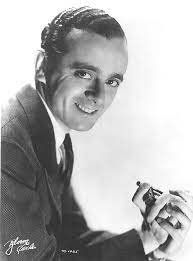
Three Wishes
The Baroness asked Larry Adler, if three wishes were grantable, what would they be and he replied this:
-
-
“I don’t know there is anything I want that badly. I live very much in the present and so my wishes are pretty damn well gratified. I’d like to write a show. Because all I’ve written so far are film scores, and you can’t tell by them if you’re a good composer or not. Even though one of my film scores got an Academy Award ~ my first film score, in fact! But you only really know when you write a show, and the music carries the show, and has an independent life outside the show. Gershwin is a good example of that..””And help a chick. You know: We have a common understanding.”
- “I’d like to be the best father it’s possible to be.”
- “I’d like to be emotionally where I am chronologically. Chronologically, I’m forty-eight. Emotionally, I’m nineteen ~ if I am nineteen!”
-
More Posts: baroness,harmonica,history,instrumental,jazz,music,pannonica,three,wishes
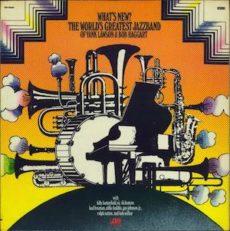
Daily Dose Of Jazz…
John Rhea “Yank” Lawson was born May 3, 1911 in Trenton, Missouri. He started playing music on saxophones and piano before settling on the trumpet as a teenager. He played in the University of Missouri Dance Band, and was soon offered a job with Slatz Randall’s group, with whom he made his recording debut on Mom in 1932. Dropping out of college he had a stint with Wingy Manone before being hired to join Ben Pollack in late 1933.
From 1933 to 1935 Yank worked in the Pollack orchestra, then became a founding member of the Bob Crosby Orchestra. He later worked with Benny Goodman and Tommy Dorsey, but also worked with Crosby again in 1941~1942. Later in the decade he became a studio musician leading his own Dixieland sessions.
By the 1950s he and Bob Haggart created the Lawson-Haggart band and they worked together in 1968 to form the World’s Greatest Jazz Band, a Dixieland group which performed for the next ten years. He recorded for Atlantic, Audiophile, Decca and Jazzology.
Trumpeter Yank Lawson, best known for Dixieland and swing music, transitioned on February 18, 1995 in Indianapolis, Indiana.
More Posts: bandleader,history,instrumental,jazz,music,trumpet
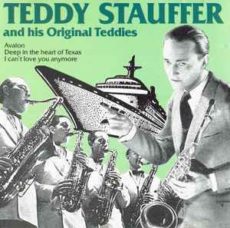
Daily Dose Of Jazz…
Ernst Heinrich “Teddy” Stauffer was born May 2, 1909 In Murten, Fribourg, Switzerland He was dubbed Germany’s “Swing-King” of the 1930s. He formed the band known as the Teddies, which is also billed as the Original Teddies or the International Teddies, which continued after he left in 1941.
Annual trips to the Swiss cities of St. Moritz, Arosa and also a guest appearance in London, England were responsible for the international fame of the Teddies band. Until 1939, he appeared with his Original Teddies-Band especially in Berlin and Hamburg, Germany. He enjoyed his popularity at the 1936 Olympics, had hits with Goody~Goody, and turned Horst Wessel Lied, the National Socialist’s anthem, into a jazz number in 1938. With his jazzy swing music, however, Stauffer increasingly got in trouble with the Reichsmusikkammer, a Nazi institution that promoted “good German music” which was composed by Aryans and seen as consistent with Nazi ideals.
Returning to Switzerland in 1939, he eventually emigrated to the United States and then to Mexico. His reputation as a playboy and a well~known womanizer who was married to Hedy Lamar, did not sway him from also having affairs with Rita Hayworth and Barbara Hutton.
Violinist, saxophonist and bandleader Teddy Stauffer who was also an actor, nightclub owner, and restaurateur transitioned on August 27, 1991 in Acapulco, Mexico at the age of 82.
More Posts: bandleader,club owner,history,hotelier,instrumental,jazz,music,saxophone,violin
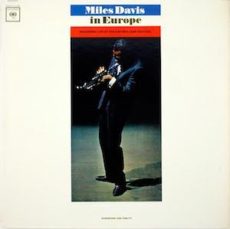
Requisites
Miles Davis In Europe ~ Miles Davis | By Eddie Carter
This morning’s choice from the library is a 1964 live album by Miles Davis that’s an overlooked gem, in my opinion, Miles Davis In Europe (Columbia CL 2183/CS 8983). It documents the trumpeter in concert at the 1963 Antibes International Jazz Festival during a successful European tour that was also broadcast over RTF (Radiodiffusion-Télévision Française). He’s joined on stage by George Coleman on tenor sax, Herbie Hancock on piano, Ron Carter on bass, and Tony Williams on drums who also appeared on Seven Steps To Heaven recorded a few months earlier. My copy used in this report is the original US Mono album and Side One opens with the introduction of the quintet by Master of Ceremonies, André Francis.
Autumn Leaves by Joseph Kosma, Johnny Mercer, and Jacques Prévert opens with Miles’ muted introduction and excellent support by the rhythm section. They begin with a deceptively easy melody; he then picks up the pace on the opening chorus with a carefree swing. George steps up next with a buoyant statement that cooks, then Herbie takes flight for a scintillating interpretation. Ron walks with assurance briefly on the closer ahead of the group’s ending theme. The leader’s Milestones is off to the races on the quintet’s speedy melody. Davis soars into the stratosphere on the lead solo. Coleman shows he’s equally adept for speed on the second statement, and Hancock closes with a highly energetic performance leading to the group’s vigorous ending.
The quintet turns up the temperature a little more on Joshua by Victor Feldman with a torrid opening chorus. Miles takes off like a speedy gazelle on the first statement. George comes in next, dispensing a fierce intensity on the second reading, then Herbie goes on a high-spirited flight in the closer preceding the ensemble’s lively summation. Side Two gets underway with Miles returning to the mute for Cole Porter’s All of You. It first appeared in the Broadway musical, Silk Stockings (1955). He and the trio begin the song with an attractive melody. Davis starts the solos with a charmingly articulate interpretation. Coleman offers some cheerful notes in the second performance. Hancock takes the final solo swinging easily into the trumpeter’s closing chorus and soft climax.
Walkin’ by Richard Carpenter opens with a quick melody and a furious opening statement by Miles. Tony takes the stage next and sparkles on an energetic interpretation. George swings with a fiery flavor in the third reading and Herbie closes the solos with a thoroughly entertaining performance leading to the theme’s reprise and finish. Miles Davis In Europe was produced by Teo Macero and RTF was behind the dials for the broadcast recording. The sound quality is superb, placing the listener in the festival audience to enjoy the quintet’s set. Everyone is in top form throughout, this album captures the quintet’s fire during their performance, and the music cooks from start to finish. If you’re in the mood for some swinging live jazz, I offer for your consideration, Miles Davis In Europe. It’s worthy of wider recognition and makes a perfect complement to the group’s other live albums, My Funny Valentine and ‘Four’ & More!
~ ‘Four’ & More (Columbia CL 2453/CS 9253), My Funny Valentine (Columbia CL 2306/CS 9106), Seven Steps To Heaven (Columbia CL 2051/CS 8851) – Source: Discogs.com
~ Autumn Leaves – Source: JazzStandards.com
~ All of You – Source: Wikipedia.org
© 2022 by Edward Thomas Carter
More Posts: choice,classic,collectible,collector,history,instrumental,jazz,music,trumpet
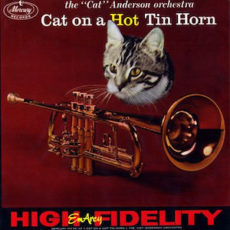
Daily Dose Of Jazz…
Henderson Chambers was born on May 1, 1908 in Alexandria, Louisiana and studied at Leland College and Morehouse College before joining the Neil Montgomery band in 1931. He played in Nashville with Doc Banks in 1932, then with Jack Jackson’s Pullman Porters, Speed Webb, Zack Whyte, and Al Sears in Kentucky.
After two years with Tiny Bradshaw in the middle of the Thirties, Chambers moved to New York City where he played with Chris Columbus at the Savoy Ballroom in 1939-40. Following this he played for the next three years with Louis Armstrong.
Later in the 1940s, he worked with Don Redman, Sy Oliver, Lucky Millinder, and Count Basie. By the 1950s he would spend time with Cab Calloway, Doc Cheatham, Duke Ellington, and Mercer Ellington. For a period he worked as a studio musician, however, after joining Ray Charles’s band from 1961 to 1963, Henderson played with Basie again until 1966.
He recorded seven albums with Count Basie, five with Buck Clayton and ten with Gene Ammons, Cat Anderson, Sammy Davis Jr., Ella Fitzgerald, Edmond Hall, Arthur Prysock & Count Basie, Jimmy Rushing, Frank Sinatra & Count Basie, and Ernie Wilkins.
Trombonist Henderson Chambers’ final performances were with Edgar Battle, shortly before his transition from a heart attack on October 19, 1967 in New York City.
More Posts: history,instrumental,jazz,music,trombone




